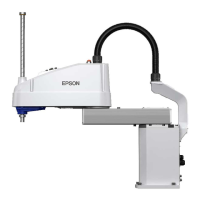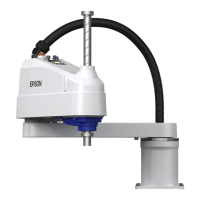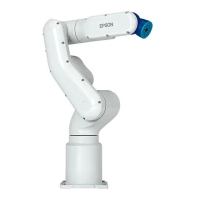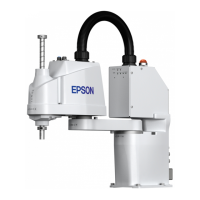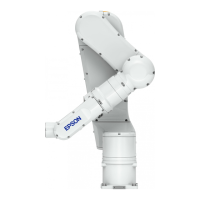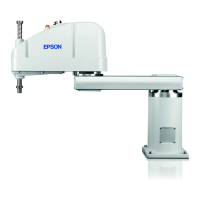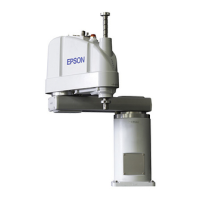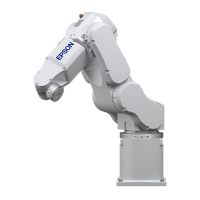Setup & Operation 3. Environments and Installation
24
LS20-B Rev.4
3.2 Base Table
A base table for anchoring the Manipulator is not supplied. Please make or obtain the base
table for your Manipulator. The shape and size of the base table differs depending on the
use of the robot system. For your reference, we list some Manipulator table requirements
here.
The base table must not only be able to bear the weight of the Manipulator but also be able
to withstand the dynamic movement of the Manipulator when it operates at maximum
acceleration/deceleration. Ensure that there is enough strength on the base table by
attaching reinforcing materials such as crossbeams.
The torque and reaction force produced by the movement of the Manipulator are as follows:
Max. reaction torque on the horizontal plate
Max. horizontal reaction force
Max. vertical reaction force
The threaded holes required for mounting the Manipulator base are M12. Use mounting
bolts with specifications conforming to ISO898-1 property class: 10.9 or 12.9.
For dimensions, refer to Setup & Operation: 3.3 Mounting Dimensions.
The plate for the Manipulator mounting face should be 20 mm thick or more and made of
steel to reduce vibration. The surface roughness of the steel plate should be 25 μm or less.
The table must be secured on the floor or wall to prevent it from moving.
The Manipulator must be installed horizontally.
When using a leveler to adjust the height of the base table, use a screw with M16 diameter
or more.
If you are passing cables through the holes on the base table, see the figures below.
D
o not remove the M/C cables from the Manipulator.
For environmental conditions regarding space when placing the Controller on the base table,
refer to the Controller manual.
WARNING
■
To ensure safety, a safeguard must be installed
for the robot system.
safeguard, refer to the EPSON RC+ User’s Guide.
